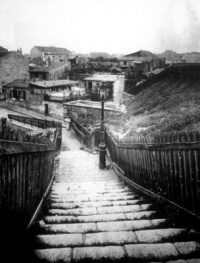City
From The Art and Popular Culture Encyclopedia
|
"I have to admit that the Passage was an unbelievable pesthole. It was made to kill you off, slowly but surely, what with the little mongrels' urine, the shit, the sputum, the leaky gas pipes. The stink was worse than the inside of a prison." --Death on Credit (1936) by Louis-Ferdinand Céline "Fex urbis lex orbis"--Les Misérables (1862) by Victor Hugo Here's a little thing that's gonna please ya --"Bangkok" (1978) by Alex Chilton "City Too Hot" (1977) by Lee Perry “A comprehensive plan for the transformation of Paris has been gradually developed since 1848; slums have disappeared from Berlin since 1870; eighty-eight acres in the centre of Glasgow have been remodelled; Birmingham has transformed ninety-three acres of squalid slums into magnificent streets flanked by architectural buildings; Vienna, having completed her stately outer ring, is about to remodel her inner city: and the aim of the writer is to show, by example and illustration, in what way the means successfully employed for improving these cities can be best adapted to the needs of London.”--Garden Cities of To-morrow (1898) by Ebenezer Howard |
_by_Giovanni_Paolo_Panini.jpg)
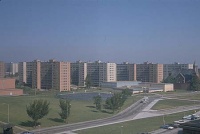
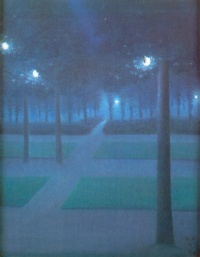
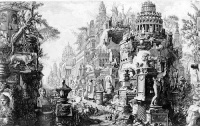
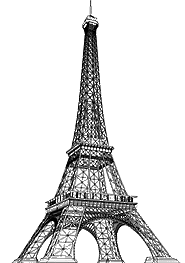
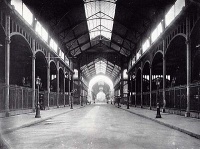
|
Related e |
|
Featured: |
A city is a human settlement of some size, an area with an increased density of human-created structures in comparison to the areas surrounding it. This page covers urban areas such as cities, metropolises, towns or conurbations, excluding rural settlements such as villages and hamlets.
Urban areas are created and further developed by the process of urbanization a process of rising population density and urban sprawl.
Unlike an urban area, a metropolitan area includes not only the urban area, but also satellite cities plus intervening rural land that is socio-economically connected to the urban core city, typically by employment ties through commuting, with the urban core city being the primary labor market. In fact, urbanized areas agglomerate and grow as the core population/economic activity center within a larger metropolitan area or envelope.
Contents |
Etymology
The word city and the related civilization come from the Latin root civitas, originally meaning 'citizenship' or 'community member' and eventually coming to correspond with urbs, meaning 'city' in a more physical sense. The Roman civitas was closely linked with the Greek polis—another common root appearing in English words such as metropolis.
In toponymic terminology, names of individual cities and towns are called astionyms (from Ancient Greek ἄστυ 'city or town' and ὄνομα 'name').
Birth of cities
A city is an urban settlement with a particularly important status which differentiates it from a town.
For Paul Virilio, the transition from feudalism to capitalism was driven not primarily by the politics of wealth and production techniques but by the mechanics of war. Virilio argues that the traditional feudal fortified city disappeared because of the increasing sophistication of weapons and possibilities for warfare. For Virilio, the concept of siege warfare became rather a war of movement. In Speed and Politics, he argues that 'history progresses at the speed of its weapons systems'.
Early cities developed in a number of regions of the ancient world. Mesopotamia can claim the earliest cities, particularly Eridu, Uruk, and Ur. After Mesopotamia, this culture arose in Syria and Anatolia, as shown by the city of Çatalhöyük (7500-5700BC). It is the largest Neolithic site found to date. Although it has sometimes been claimed that ancient Egypt lacked urbanism, several types of urban settlements were found in ancient times.
The Indus Valley Civilization of ancient India and China are two other areas with major indigenous urban traditions. Among the early Old World cities, Mohenjo-daro of the Indus Valley Civilization in present-day Pakistan, existing from about 2600 BC to 1900 BC, was one of the largest, with an estimated population of 40,000 or more. Mohenjo-daro and Harappa, the large Indus capitals, were among the first cities to use grid plans, drainage, flush toilets, urban sanitation systems, and sewage systems. At a somewhat later time, a distinctive urban tradition developed in the Khmer region of Cambodia, where Angkor grew into one of the largest cities (in area) of the world.
In the ancient Americas, early urban traditions developed in Mesoamerica and the Andes. Mesoamerica saw the rise of early urbanism in several cultural regions, including the Classic Maya, the Zapotec of Oaxaca, and Teotihuacan in central Mexico. Later cultures such as the Aztec drew on these earlier urban traditions. In the Andes, the first urban centers developed in the Chavin and Moche cultures, followed by major cities in the Huari, Chimu and Inca cultures.
This roster of early urban traditions is notable for its diversity. Excavations at early urban sites show that some cities were sparsely populated political capitals, others were trade centers, and still other cities had a primarily religious focus. Some cities had large dense populations, whereas others carried out urban activities in the realms of politics or religion without having large associated populations. Theories that attempt to explain ancient urbanism by a single factor, such as economic benefit, fail to capture the range of variation documented by archaeologists (Smith 2002).
The growth of the population of ancient civilizations, the formation of ancient empires concentrating political power, and the growth in commerce and manufacturing led to ever greater capital cities and centres of commerce and industry, with Alexandria, Antioch and Seleucia of the Hellenistic civilization, Pataliputra (now Patna) in India, Chang'an (now Xi'an) in China, Carthage, ancient Rome, its eastern successor Constantinople (later Istanbul), and successive Chinese, Indian and Muslim capitals approaching or exceeding the half-million population level.
Keith Hopkins estimates that ancient Rome had a population of about a million people by the end of the first century BC, after growing continually during the 3rd, 2nd, and 1st centuries BC. Alexandria's population was also close to Rome's population at around the same time, the historian Rostovtzeff estimates a total population close to a million based on a census dated from 32 AD that counted 180,000 adult male citizens in Alexandria. Similar administrative, commercial, industrial and ceremonial centres emerged in other areas, most notably medieval Baghdad, which according to George Modelski, later became the first city to exceed a population of one million by the 8th century instead of Rome.
The growth of ancient and medieval empires led to ever greater capital cities and seats of provincial administration, with Pataliputra (in India), Changan (in China), ancient Rome, its eastern successor Constantinople (later Istanbul), and successive Chinese, Islamic, and Indian capitals approaching or exceeding the half-million population level. It is estimated that ancient Rome had a population of around 450,000 people by the end of the last century BC, which is considered the only European city to reach that number until the Industrial Revolution, although Constantinople came close. Alexandria's population was also close to Rome's population at around the same time. Similar large administrative, commercial, industrial and ceremonial centres emerged in other areas, most notably Baghdad, which became the first city to exceed a population of one million, followed by Beijing also exceeding one million.
While David Kessler and Peter Temin consider ancient Rome to be the largest city before 19th century London, George Modelski considers medieval Baghdad, with an estimated population of 1.2 million at its peak, to be the largest city before 19th century London. Others estimate that Baghdad's population may have been as large as 2 million in the 9th century.
Agriculture was practiced in sub-Saharan Africa since the third millennium BC. Because of this, cities were able to develop as centers of non-agricultural activity. Exactly when this first happened is still a topic of archeological and historical investigation. Western scholarship has tended to focus on cities in Europe and Mesopotamia, but emerging archeological evidence indicates that urbanization occurred south of the Sahara in well before the influence of Arab urban culture. The oldest sites documented thus far are from around 500 AD including Awdaghust, Kumbi-Saleh the ancient capital of Ghana, and Maranda a center located on a trade rout between Egypt and Gao.
Urbanization
Urbanization is the physical growth of urban areas as a result of rural migration and even suburban concentration into cities, particularly the very largest ones. The United Nations projected that half of the world's population would live in urban areas at the end of 2008. By 2050 it is predicted that 64.1% and 85.9% of the developing and developed world respectively will be urbanised.
Urbanization is closely linked to modernisation, industrialisation, and the sociological process of rationalisation. Urbanisation can describe a specific condition at a set time, i.e. the proportion of total population or area in cities or towns, or the term can describe the increase of this proportion over time. So the term urbanisation can represent the level of urban relative to overall population, or it can represent the rate at which the urban proportion is increasing.
Urbanization is not merely a modern phenomenon, but a rapid and historic transformation of human social roots on a global scale, whereby predominantly village culture is being rapidly replaced by predominantly urban culture. The last major change in settlement patterns was the accumulation of hunter-gatherers into villages many thousand years ago. Village culture is characterised by common bloodlines, intimate relationships, and communal behavior whereas urban culture is characterised by distant bloodlines, unfamiliar relations, and competitive behavior. This unprecedented movement of people is forecast to continue and intensify in the next few decades, mushrooming cities to sizes incomprehensible only a century ago. Indeed, today, in Asia the urban agglomerations of Dhaka, Karachi, Mumbai, Delhi, Manila, Seoul and Beijing are each already home to over 20 million people, while the Pearl River Delta, Shanghai-Suzhou and Tokyo are forecast to approach or exceed 40 million people each within the coming decade. Outside Asia, Mexico City, Sao Paulo, New York City, Lagos and Cairo are fast approaching or home to over 20 million people already.
See also
- Back to the land
- City-state
- Division of labour
- Heterosociality
- Megalopolis (city type)
- Conurbation
- Suburban sprawl
- White flight
- Urban morphology
- Political demography
Contributors to urbanisation:
Historical:
See also
- Cityscape
- Dérive
- Garden city movement
- Ghost town
- Ideal city
- Italian city-states
- Lost city
- No-go area
- Public space
- Town Hall
- Town square
- Unitary urbanism
- Urban culture
- Urban decay
- Urban exploration
- Urban planning
- Urbanization
- Walking city


.JPG)
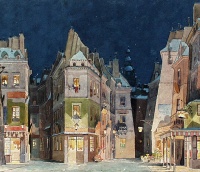
.jpg)
